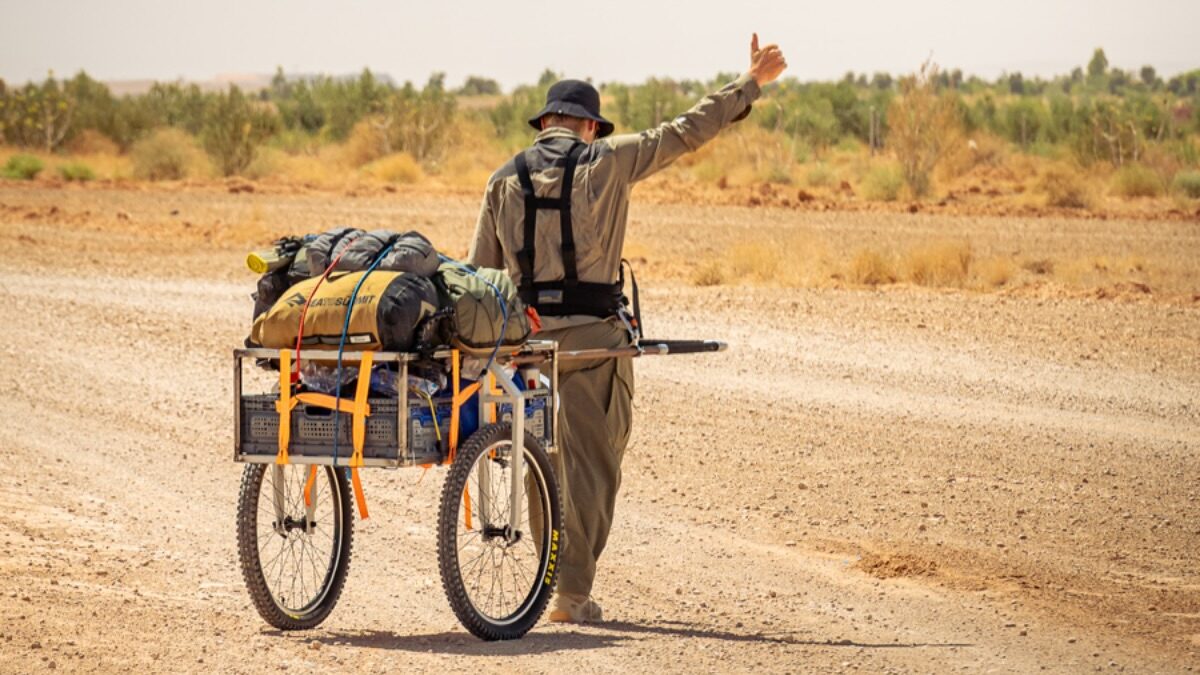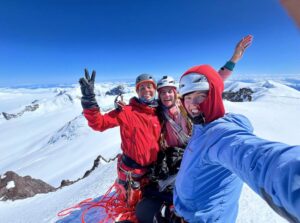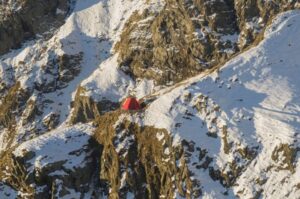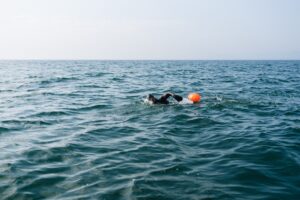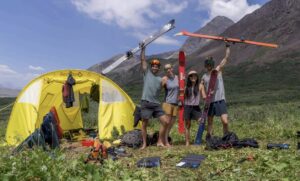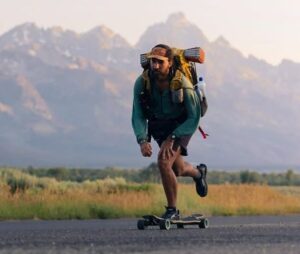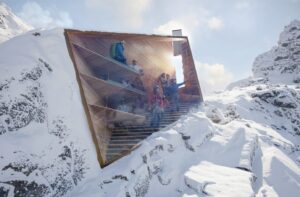Loic Cappellin, 26, of Switzerland is attempting a human-powered journey from the Arctic to the Amazon. He began in early 2025, skiing through northern Sweden and Norway. He then cycled 7,000km through Europe to the Mediterranean, where he crossed to Morocco.
Each stage has been a test of endurance, but the third leg, across the Moroccan desert, proved to be the most demanding so far.
Cappellin’s plan was to traverse roughly 1,000km of desert from the oasis town of Boudnib, on the fringe of the Sahara, to the Atlantic coast. It was a natural continuation of his overland route south, connecting Europe to Africa and setting up the next chapter: sailing across the Atlantic. But unlike the bike roads of Europe or the frozen mountains in Norway, the Moroccan desert threw up additional challenges beyond heat: rocks and bureaucracy.
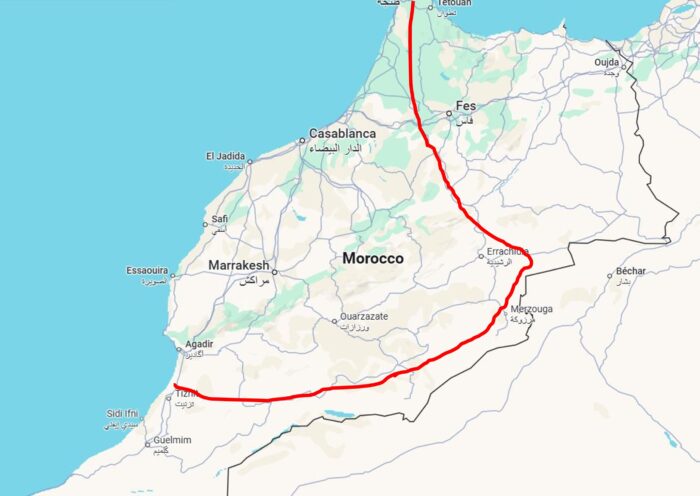
An outline of Cappellin’s route
“The terrain was much rockier than I had anticipated,” Cappellin told ExplorersWeb. “I had already been in this region before, but not on this exact route. From the satellite imagery I had studied, I hadn’t judged it would be so rugged.”
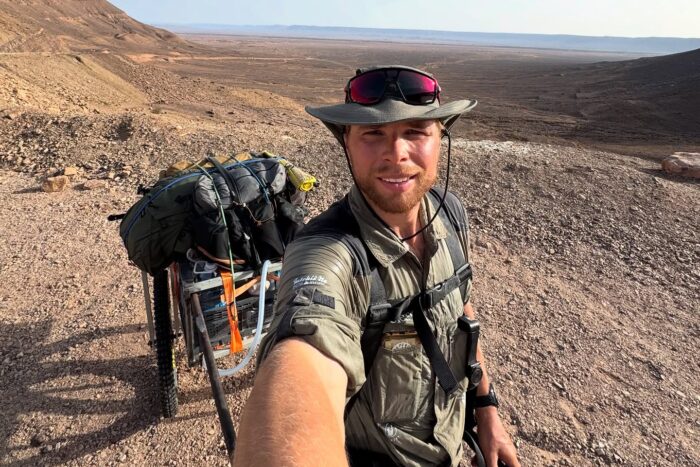
Cappellin and his cart. Photo: Loic Cappellin
“As a result, the wheels of my cart were damaged as early as the second day. The cart’s center of gravity was too high, and with the full load, it tended to sway. Even though I had reinforced wheels, they bent under the pressure.”
Heat and weight
The summer heat added another dimension. Starting on August 8, temperatures reached 50°C every day.
“I consumed on average 15 liters of water per day — around 12 liters to drink, with the rest used for cooking, washing, and keeping my bottles cool by wrapping them in cloth — a local technique known as the Berber fridge,” Cappellin explained. “At maximum, I carried 85 liters of water, which pushed the cart’s weight up to an estimated 160kg.”
“Physically, it was brutal,” he added. “Coming straight off 7,000km on the bike, my body was not used to pulling such weight, and I suffered from severe back and hip pain for the first two weeks.”
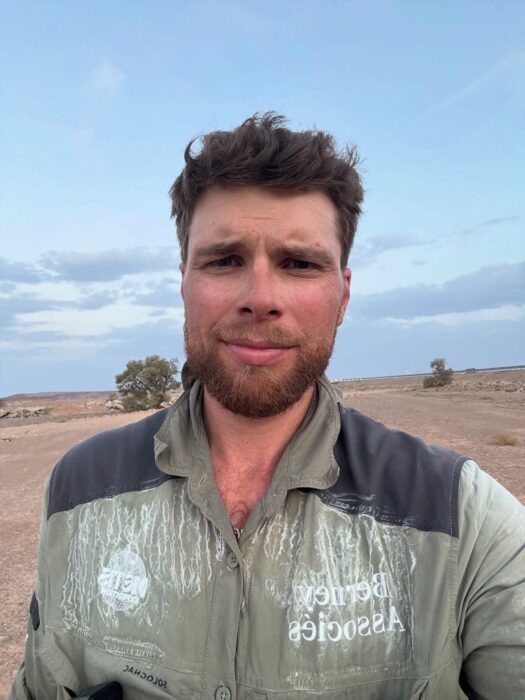
Capellin’s shirt, stained with salt from sweating. Photo: Loic Cappellin
This part of Morocco, between the High Atlas to the north and the dunes of the Sahara to the south, is a harsh transitional zone of rocky plains, wadis, and military-controlled valleys. After his first 150km, Cappellin was spotted by the police. At first, they only observed from a distance, but their presence soon became constant.
Tent lost
“This second part [of the crossing] was marked by the loss of my tent. I hadn’t secured it properly to the cart, and it fell off. Someone passing by picked it up. With the help of a local, I managed to find a replacement tent that got me through another 260km.”
By then, the mercury was hitting new extremes. On August 22, Cappellin recorded his hottest day: 52°C. A few nights later, he was jolted from sleep by authorities.
“I was forcibly woken up by police and relocated to what they considered a ‘safer’ place — a roadside café.”
As he attempted to continue toward the Iriki Lake region, a dry basin on the edge of the desert, he was blocked outright.
“I was intercepted by the Royal Gendarmerie in a 4×4. They considered my attempt too dangerous and refused to let me continue, even after I presented my experience, the kilometers already covered, and my emergency equipment, including two SOS beacons. The breaking point was when they showed me a photo of a foreign motorcyclist who had been found dead in the region just weeks before. I had to yield and rethink my route.”
Police escorts and altered plans
From then on, Cappellin was never out of sight. Police on motorbikes tailed him by day. At night, they sometimes posted guards near his camp.
“I ended up with a 24-hour police escort, including a night guard posted next to my camp. That was the limit for me.”
The restrictions forced him onto main valleys and paved roads. His cart overturned repeatedly on broken ground, but he eventually made it to the city of Tata, in southwestern Morocco, where he had hoped to switch to a bicycle. None were available, however.
In the town of Akka, also in the southwest, worn down by the constant surveillance and logistical hurdles, he decided to abandon the cart entirely.
“With the help of the former mayor, I finally found a city bike for a reasonable price. Completely unsuited for adventure use, but it did the job. I left the cart behind and rode the last 300km to the Atlantic coast. To my relief, once I was on the bike, the police left me alone.”
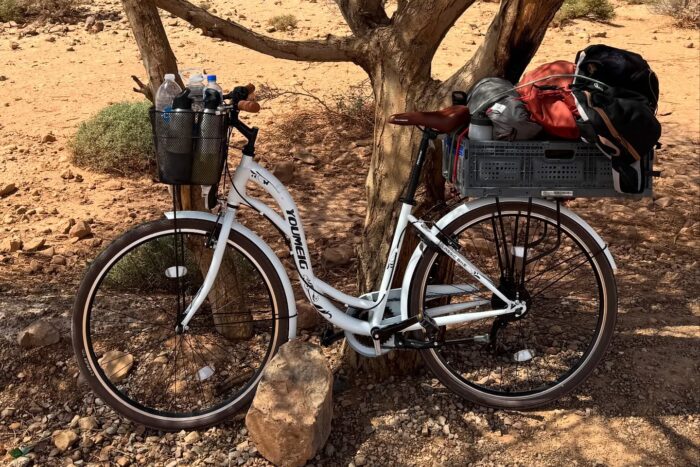
The ‘bakery bike.’ Photo: Loic Cappellin
Riding on a basic town-style bike loaded with equipment, food, and water was far from easy.
“Riding 300km on what was essentially a ‘bakery bike,’ loaded with 30kg of gear plus a backpack, was another challenge altogether. But on September 26, after 1,000km from Boudnib, I reached Sidi Ifni and officially closed this desert stage.”
The next leg
“This leg was much more demanding than I had imagined, not only because of the terrain and climate, but also because of the constant interventions from the authorities,” Cappellin told ExplorersWeb. “Still, I was deeply touched by the kindness and generosity of the Moroccan people, who helped me along the way.”
The Moroccan desert stage provided both a physical and psychological challenge. Crushing heat, bureaucratic roadblocks, and improvisations with unsuitable gear. Yet Cappellin’s persistence carried him to the Atlantic.
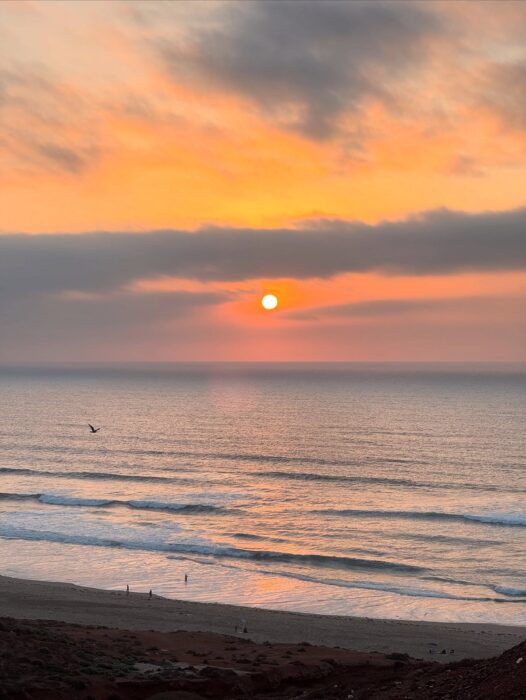
Finally, the Atlantic. Photo: Loic Cappellin
Now, the focus shifts to the ocean. After skiing, cycling, trekking, and cart hauling, Cappellin is about to enter new territory. “Sailing is completely new to me, so I am excited to gain experience and face this new chapter of the journey.”
He will cross the Atlantic on a skippered sailboat to continue his goal to link the Arctic to the Amazon under human power.
